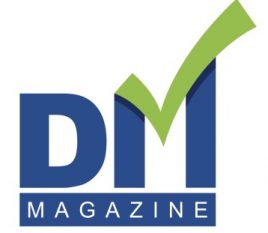 By Geoff Linton
By Geoff Linton
Ten years ago, marketing was simpler: fewer digital vehicles, less algorithmic targeting, and audiences with more time and fewer interruptions.
Today, in our fast-paced, evolving digital world, marketers are scrambling to keep up. Balancing data, technology, numerous marketing vehicles, and relentless campaign schedules is overwhelming. By wearing so many hats, marketers risk becoming overly focused on execution — pumping out campaigns and content without strategic cohesion. Mediocre, general content now floods the market, and GenAI is accelerating a new wave of automated, low-value content, sometimes referred to as “splot” (spam-like bot output).
Good marketing must be anchored in the customer — their needs, priorities, and a clear, reinforced value proposition. Fundamentally, brands are no longer just competing with each other. They are fighting for attention against an endless stream of interruptions, often amplified by the ever-present smartphone.
This article explores today’s messaging challenges and offers insights on how brands can better capture and retain customer attention. Research confirms that attention spans are plummeting. As digital rewires behaviours and brains, marketers must adopt new approaches.
Fix the “More” Mindset and Bombardment Problem
The “more” mindset is undermining marketing effectiveness.
First, there are simply more digital channels to manage. A CMA/Ipsos Reid study identified over 19 digital marketing vehicles today, compared to fewer than 7 in 2010. Consumers are now bombarded constantly — via social media, email, text, and apps. As marketers deploy more vehicles, they inadvertently overwhelm audiences, leading to desensitization. (Reminder: eyeballs are not engagement.)
Meanwhile, social media algorithms tailor content streams, training users to become addicted to constant stimuli and prompts. The results?
- Shorter attention spans
- Multi-screen fixation
- Reduced ability to focus on meaningful content
At the same time, brands and agencies have reacted by generating more content — in more formats — leading to severe audience fragmentation. Fragmentation complicates targeting, while overpublishing low-value content erodes trust. Our audits of email marketing programs reveal that many operate on autopilot, with bloated, unclear messaging. The obsession with “more” is creating real strategic liabilities.
Assess Your Content Inventory
Creating relevant, high-quality content demands significant resources. Leading brands anchor their content around strategic themes and pillars that align with their value proposition.
Using AI tools, we have observed that many brands scatter their content across too many disparate topics. As marketing thought leader Tony Chapman recently noted:
“What if the content companies are producing doesn’t even matter to their customers? That’s a massive misallocation of capital and effort.”
Content is a strategic asset. Brands must audit their content for relevance, quality, and uniqueness — particularly against key competitors.
“The right content mix and messaging can shape the market and drive market share gains,” Chapman emphasizes.
The Science of Attention: Leveraging Conversational Analysis
Capturing attention requires two things: relevance and receptivity. In an era of constant interruptions and competing screens, understanding what matters to your audience is critical.
Many leading marketers now mine social media to identify core topics of conversation. A SocialPulse report typically outlines 5–10 key topics resonating within target customer segments. Analysis focuses on:
- Volume (number of unique conversations)
- Longevity (how long topics stay relevant)
- Emotional connection (sentiment, variance, and attitudes)
AI models can rank topics by attitude scores, momentum, and even predict emerging themes — helping brands refine their content strategies rapidly (often in less than two weeks).
Pro Tip:
If you have strong first-party data, an AI engineer and data scientist can build a proprietary Attention Index to measure and track topic resonance.
Plant Your Stake: Strengthen Digital Footprint & Positioning
Another powerful strategy is to compare the key elements of your value proposition and content portfolio through the lens of Net Promoter Score (NPS), especially segmented regionally. NPS analysis can spotlight strengths, vulnerabilities, and whitespace opportunities — areas where competitors are weak.
Further, Agentic AI systems can audit both owned and earned media content to:
- Classify published topics
- Identify conversational gaps (where your brand is absent)
- Prioritize new content development
By closing conversational gaps, you not only strengthen your digital footprint but also position your brand more effectively in search prompts, AI-generated results, and user recall.
Conclusion: Strategy Before Structure
The accelerating evolution of digital and AI impacts both consumers and marketers. Winning attention today demands strategic precision — not just tactical volume.
Start with a Know Your Customer (KYC) mindset.
Here are key questions to elevate your messaging strategy:
- Who is your addressable audience? Which customer segments are the priority?
- Are your marketing messages truly breaking through?
- Are your customers desensitized? How long is their attention span?
- Does your content matter to them?
- Do you have content or conversation gaps?
- What conversational opportunities are you missing?
- Are there topics you should de-emphasize?
- What will the future of brand-customer interaction look like?
Geoff Linton, P.Eng, MBA, Chartered Marketer is Senior Consultant & Strategist, ClaroVant Digital. He is a marketing engineer with 35 years of industry experience helping companies drive business results through optimizing digital strategies, integrating platforms and adopting new technology. Geoff is also an active member on the CMA AI Committee.


